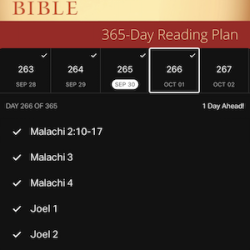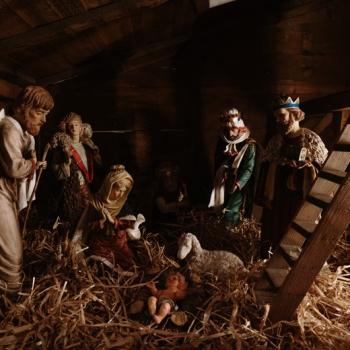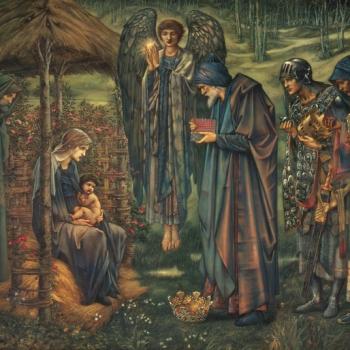
The Origins of Advent: Tracing Back to Early Christianity
The history of Christian Advent finds its origins in the fourth century, drawing its name from the Latin term “adventus,” which translates to “coming” or “arrival.” Initially, Advent was a season observed as a time of fasting and penance, similar in tone and purpose to the Lenten season. Early Christians dedicated this period to prepare their hearts and minds for the celebration of the birth of Jesus Christ.
During its initial phases, Advent was primarily focused on self-reflection, repentance, and spiritual preparation. It served as a time for believers to reflect on the significance of Christ’s incarnation and to anticipate his coming into the world. This anticipation wasn’t solely limited to commemorating Christ’s historical birth but also encompassed a hopeful expectation of his promised return or second coming, emphasizing a broader theological perspective beyond historical events.
Over time, the observance of Advent underwent an evolution in its emphasis and practices. Gradually, the somber and penitential aspects of the season gave way to a more joyful anticipation of Christ’s birth. The focus shifted from strict fasting and repentance to embracing a spirit of hope, expectation, and joyful waiting for the coming of the Messiah.
This transformation in the nature of Advent reflected a shift in the interpretation of its significance within Christian communities. While its roots remained tied to preparation and reflection, the emphasis expanded to include an outlook of hope and joy associated with the anticipation of Christ’s arrival. The season became a time not just for repentance but also for joyful expectation, celebrating the imminent arrival of the Savior.
Therefore, the evolution of Advent from a period of strict penance to one marked by joyful anticipation of Christ’s birth and second coming represents the dynamic nature of Christian traditions. This transformation highlights the adaptability of religious practices over time, allowing for deeper spiritual contemplation and a more holistic understanding of the significance of Christ’s coming for believers.
Advent: A Season of Preparation and Anticipation
Commencing on the fourth Sunday before Christmas, Advent spans a four-week period and remains a significant observance within Western Christian traditions. It holds prominence in various denominations, including Catholic, Protestant, and Anglican churches. The essence of Advent revolves around its primary objective: to spiritually prepare believers for the commemoration of the birth of Jesus Christ.
This period of anticipation and reflection acts as a deliberate and purposeful journey towards celebrating the birth of Christ. Through the weeks leading up to Christmas, individuals within these Christian traditions engage in practices that focus on spiritual preparation, fostering a deeper connection with the essence of the Christian faith.
The timing of Advent, strategically positioned before Christmas, serves as a deliberate period for introspection, contemplation, and devotion. It offers believers an opportunity to prepare their hearts and minds, cultivating a sense of expectancy and reverence for the significance of Christ’s birth.
Throughout these four weeks, the faithful immerse themselves in various religious observances, embracing traditions that symbolize both the historical significance and the spiritual depth of this period. Practices such as the lighting of Advent candles, the use of the Advent wreath, and the observance of special church services centered around themes of hope, peace, joy, and love, all contribute to this spiritual preparation.
Moreover, Advent provides a framework for communal worship, encouraging congregations to gather and participate in shared rituals and prayers. It’s a time for the Christian community to come together, strengthening their bonds through shared faith and anticipation of the coming celebration.
The emphasis on spiritual preparation during Advent encourages individuals to align their thoughts and actions with the teachings of Jesus Christ. This preparation isn’t merely a passive observance but rather an active engagement with one’s faith, fostering a renewed commitment to living out the values and principles espoused by Christ.
In essence, Advent stands as a deliberate and purposeful season within Western Christian traditions, dedicated to the spiritual readiness of believers for the celebration of the birth of Jesus Christ. It serves as a time of devout reflection, communal worship, and personal preparation, fostering a deeper understanding and appreciation of the significance of Christ’s coming into the world.
Traditions and Rituals of Advent
During the Advent season, one of the prominent traditions is the utilization of the Advent wreath. This symbolic wreath typically consists of four candles, each representing a week of Advent, complemented by a central Christ candle. It serves as a visual emblem of the escalating anticipation and hope as the Christmas celebration approaches. Lighting a candle on each Sunday of Advent holds deep significance, symbolizing the progression toward the arrival of Christ. Through this act, the spiritual journey of believers is marked as they traverse the weeks leading up to the birth of Jesus. This ritual not only signifies the passage of time but also embodies the increasing expectation and yearning for the Savior’s imminent coming.
Another cherished practice synonymous with Advent is the tradition of the Advent calendar. Revered among families and embraced by children, this calendar features small doors or windows that are opened daily in the countdown to Christmas. Behind each door lies a revelation—whether it’s scripture verses, images, small gifts, or treats—a daily unveiling that fuels excitement and anticipation among individuals approaching Christmas Day. The Advent calendar serves as more than just a countdown; it is a conduit for engagement with the profound spiritual themes and teachings of the season. Each day’s discovery provides an opportunity for reflection, offering moments of contemplation and joy as individuals progress toward the celebration of the birth of Christ.
Both the Advent wreath and the Advent calendar stand as cherished traditions within Christian communities, embodying the essence of anticipation, reflection, and spiritual preparation during this sacred season. They serve as tangible reminders of the deeper significance of Advent, fostering a sense of spiritual connection and renewed devotion as believers journey toward the celebration of the birth of Jesus Christ.
Spiritual Reflection and Preparation
Advent, revered as a sacred time within the Christian calendar, holds a profound significance as a period for spiritual contemplation and readiness. Churches around the world curate special services during this season, offering congregants an opportunity to engage in profound moments of reflection and preparation.
These Advent services are meticulously crafted to encapsulate the essence of the season. They often include scripture readings, prayers, hymns, and sermons that revolve around fundamental themes such as hope, peace, joy, and love. These themes serve as guiding pillars, illuminating the spiritual journey individuals undertake as they prepare to celebrate the birth of Jesus Christ.
Throughout these services, the congregation delves into scriptures that emphasize the anticipation of the Messiah’s arrival, fostering a sense of hope amidst uncertainty, embracing the promise of peace, reveling in the joy that Christ’s coming brings, and recognizing the depth of love demonstrated through this divine act.
An integral part of these observances is the use of liturgical colors, which hold symbolic significance. Traditionally, the liturgical color for Advent is purple, symbolizing penance, preparation, and a solemn readiness for the coming of Christ. However, some churches opt for the color blue to represent hope, signifying the anticipation and expectation of the fulfillment of God’s promises.
The utilization of these colors within church decorations, clergy attire, and liturgical elements serves as a visual reminder of the deeper spiritual truths embedded within the Advent season. It reinforces the message of preparation, hope, and anticipation while fostering an atmosphere conducive to introspection and spiritual growth.
Ultimately, Advent services stand as a cornerstone of spiritual nourishment, offering believers a space for deep contemplation, renewal, and a strengthened connection to their faith. These gatherings provide a sacred opportunity for individuals to immerse themselves in the profound meaning of the season and to prepare their hearts and minds for the joyous celebration of the birth of Jesus Christ.
Acts of Charity and Generosity
Advent, beyond its symbolic traditions and religious observances, beckons Christians to engage in acts of charity, kindness, and generosity. This sacred season serves as a catalyst for individuals to actively embody the core values of love and compassion, reaching out to others in meaningful ways.
Encouragement toward charitable actions during Advent inspires Christians to participate in various service projects aimed at uplifting their communities. Individuals and congregations alike fervently dedicate themselves to initiatives that benefit the less fortunate. These endeavors range from organizing food and clothing drives to volunteering at shelters or participating in community outreach programs.
Donations to the needy form an integral part of Advent observance. Whether it involves contributing resources, time, or skills, the act of giving becomes a tangible expression of empathy and solidarity with those in need. Churches and charitable organizations often mobilize efforts to support marginalized groups, underscoring the importance of extending a helping hand during this season of goodwill.
Moreover, Advent serves as a poignant reminder for introspection and self-reflection. It prompts individuals to contemplate their actions, fostering a spirit of repentance and a renewed commitment to living in accordance with the teachings of Jesus Christ. This period of self-examination encourages believers to realign their lives with the principles of compassion, forgiveness, and service espoused by Christ.
The call to engage in acts of kindness and generosity during Advent transcends mere altruism; it becomes an embodiment of Christian faith in action. By actively demonstrating love and compassion towards others, individuals uphold the essence of the season, further reinforcing the significance of sharing, giving, and serving within their communities.
Ultimately, Advent’s emphasis on charitable deeds and self-reflection serves as a transformative period. It inspires a renewed sense of purpose, encouraging believers to deepen their commitment to living out the values of love, compassion, and service throughout the year, echoing the teachings and example set forth by Jesus Christ.
The Significance of Advent
Christian Advent stands as a profoundly significant season within the liturgical calendar, encapsulating a period of profound anticipation, preparation, and hope for the celebration of the birth of Jesus Christ. Its observance carries immense spiritual weight, reminding believers of the profound significance of this event and encouraging them to internalize its meaning in their lives.
The traditions and practices associated with Advent serve as poignant reminders of the historical and spiritual significance of Christ’s birth. Through the lighting of Advent candles, the use of the Advent wreath, the engagement with scripture readings, prayers, hymns, and sermons, believers are consistently immersed in rituals that deepen their understanding of the season’s significance. These traditions foster an atmosphere of reflection and contemplation, prompting individuals to contemplate the true essence of Christmas beyond the commercial aspects.
Furthermore, Advent is a catalyst for believers to embody core Christian virtues such as faith, love, and service. The season prompts individuals to actively engage in acts of kindness, generosity, and compassion, echoing the teachings of Christ. This emphasis on service and selflessness not only enriches communities but also strengthens the spiritual fabric of individuals, fostering a sense of unity and fellowship.
Beyond its outward observances, Advent remains a time for personal and communal spiritual growth. It serves as an invitation for believers to deepen their relationship with God, to seek spiritual renewal, and to foster a more profound understanding of their faith. Through prayer, reflection, and participation in meaningful practices, individuals are encouraged to rekindle their connection with God, paving the way for a more profound experience of the true meaning of Christmas.
Ultimately, Christian Advent transcends mere anticipation for the historical birth of Jesus Christ; it serves as a transformative journey, inviting believers to embrace the virtues of faith, hope, love, and service. It fosters an environment of spiritual introspection and growth, enabling individuals to deepen their understanding of the significance of Christ’s coming and empowering them to live out these values in their daily lives, not just during the Advent season but throughout the year.


















